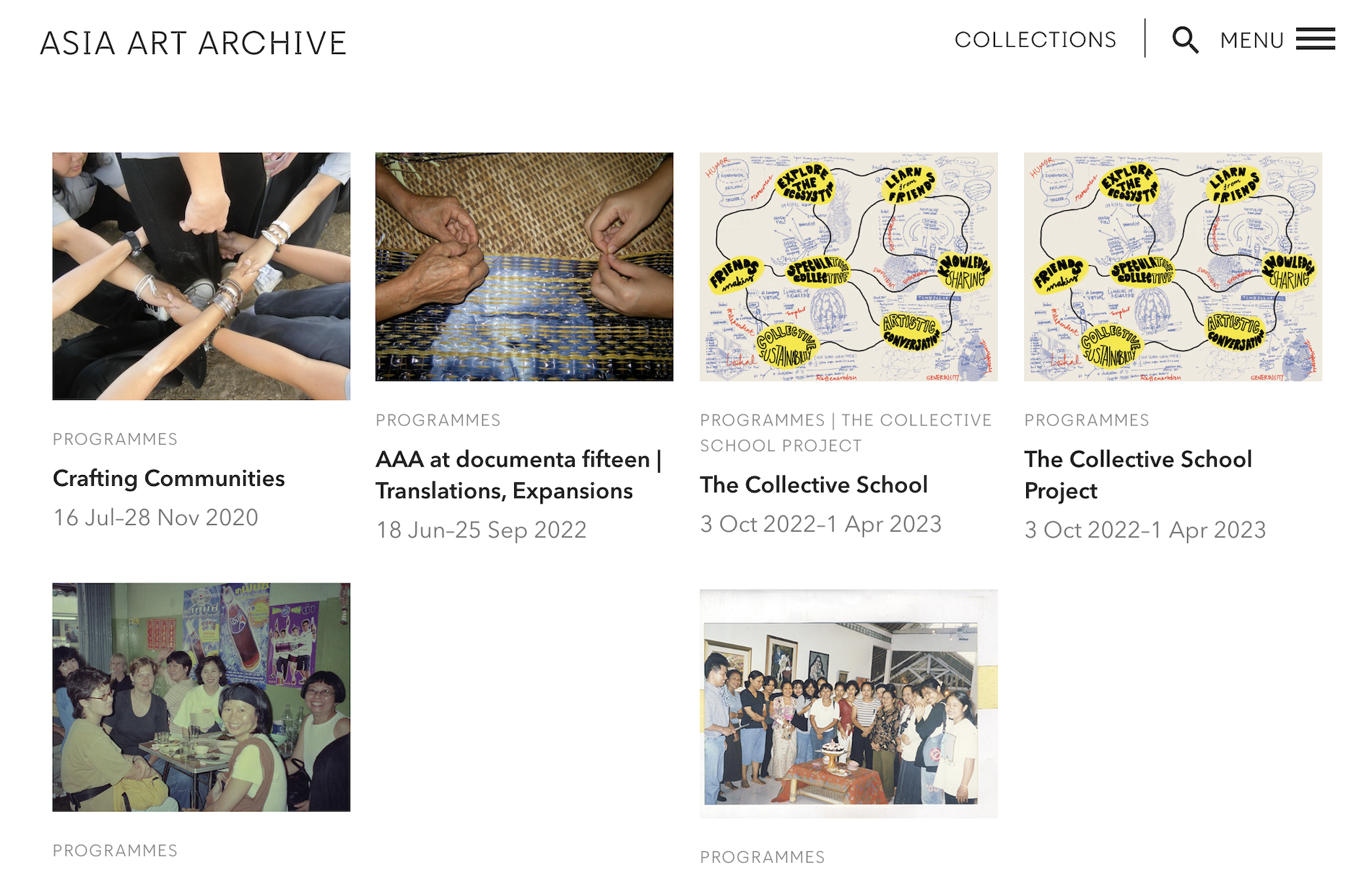By Krystina Lyon
Please note that this publication is currently under review and will be subject to changes.
My name is Krystina Lyon. I completed my Masters in Contemporary Art History in 2020 in Singapore. My thesis, titled The Role of Women’s Art Collectives in the Philippines and Thailand in Mediating the Gendered Nature of Contemporary Art, focused on two women’s art collectives: Kasibulan in the Philippines and Womanifesto in Thailand.
Although women's art collectives by and large had the same strategic goal of increasing visibility for their members and their art practice in equally patriarchal local art ecosystems, the developed tactics were different. Womanifesto's members were invited by word of mouth and there was less emphasis on a finished end product for exhibition. The formalised membership of Kasibulan with meetings, membership dues and set exhibitions provided members with structured opportunities to exhibit artwork on subjects and themes in line with female centric interests. Whilst Kasibulan supported individual achievements with their more structured collective format, Womanifesto welcomed a collective posterity that came through an informal process and by the collaborations formed by gathering regularly (roughly biannually).
This experience of studying Womanifesto has enriched not only my intellectual life but offered warm friendship with some of the most engaging contemporary artists, academics and curators working in the field of Southeast Asian contemporary art.
Reflection 1
Three years after completing my thesis research I spent some time in the AAA online Womanifesto Collection Archives as part of this project and found new connections and insights that I share with you here. I appreciated much more the visible sense of the joy and freedom in each other's company in the Womanifesto format. The playfulness came through and appeared to be a characteristic of the Womanifesto workshops referred to by John Tain in the video of the 2020 exhibition held at the AAA exhibition called Crafting Communities. For example, the smiles and delight in spending time with each other relaxing as many photos depict, the freedom to just 'be' as in the photos of Arahmaiani, Nitaya and Varsha lounging in various poses on the sofa or the image of the female hands clasped in togetherness.
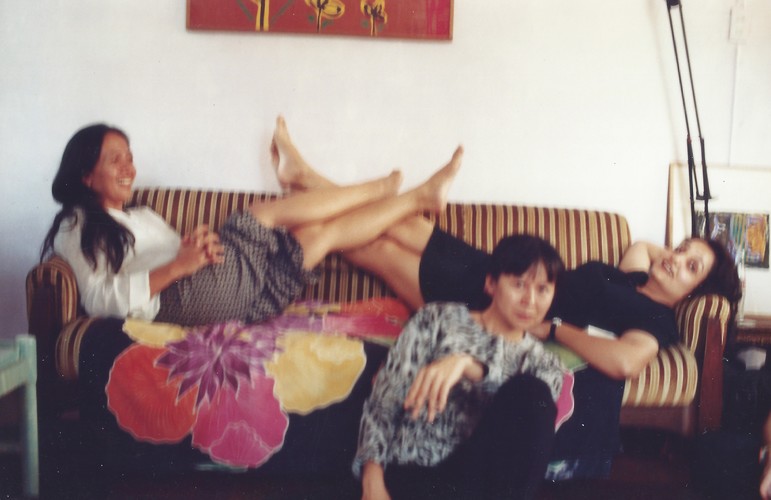
The photo and the video reminded me of how Varsha Nair described women’s camaraderie during an interview, which I conducted as part of my thesis.
'Um, I think we can all get more carried away or at least we did with Womanifesto we just got so carried away with the excitement of an idea and how we wanted to do this and show we could do it, you know, we would just take an idea and run with it. And somehow, you know, on a wing and a prayer… It would just fall into place and everybody would chip in and I think that’s also a kind of perhaps a thing about, you know, women’s camaraderie…' (Varsha Nair, p. 146, 16:15)
Reflection 2
Photos of various student workshops during the 2001 workshop in Boon Bandaan Farm that are included in the Womanifesto archive bring to life a passage from Varsha in the transcript. The ability of the archive to visually illustrate past endeavours is like an alchemy of its own.
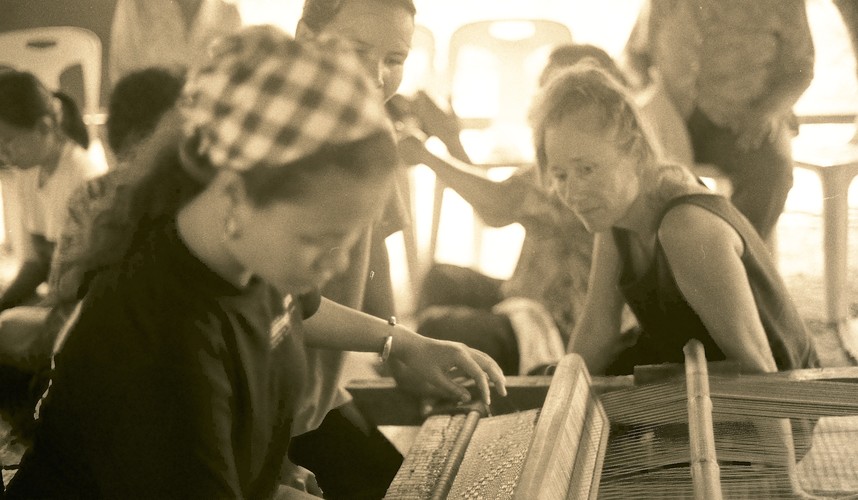
'…it was a journey or to discover, to converse, to gather, literally to gather. We were able to play in a way with all of these ideas. That’s why I refer to it as a kind of laboratory and, you know very often you end up really acting as an alchemist... It’s kind of an environment really of an exchange of, you know, of processes and of again, you know of doing things that you didn’t think you would be able to do, or you never even thought of...' (Varsha Nair, p.149, 37:38)
Reflection 3
This artwork reminds me that Phaptawan had access to the education of traditional Thai temple painting through her father who was a temple mural painter. This education is usually denied women in conservative Buddhist countries. Phaptawan incorporated subversive subject matter using this traditional style as this artwork is about the abuse young girls often experience in Thailand.
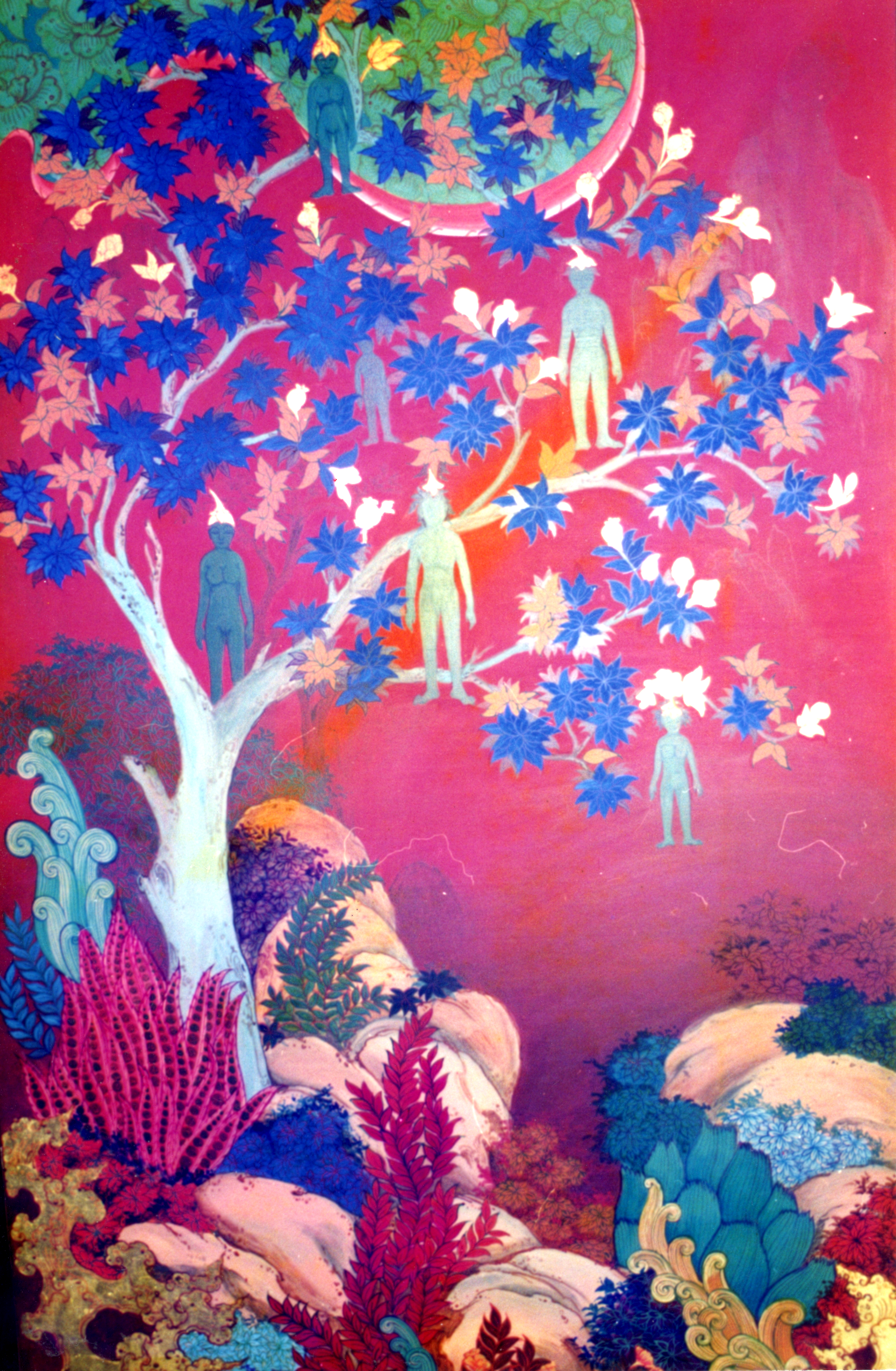
This recognition of the patriarchal status quo was something that Varsha explained so clearly when I interviewed her.
'…All of us who were there were going from, you know, let’s say overbearing patriarchal environments… and this feeling of, that we needed to have our voice really on our terms out there. The Thai artists were there, Phaptawan, you know who still very much talks about being a woman in Thai society...all of us coming from, you know, coming in there, in a way, with this… subtext. That not only is there this silence but there is also this real danger of erasure.' (Varsha Nair, p.147, 24:28)
Reflection 4
In 2021 I was introduced to Citra Sasmita, an artist from Bali who grapples with the limits and restrictions placed on women artists who traditionally have been denied access to narratives, myths, and stories that male elders control. She circumvents this lack of access by creating her own cosmology and only uses female figures in her artworks.
Her on-going project called the Timur Merah Project is a good example of how she manages to disrupt the existing male dominated canon by inserting women and their narratives in this on-going work. As she wrote in The Jugaad Project:
‘If history was written by ‘hero(es) and, by implication, not by women, it sets the stage for a lack of writing in the canonical text about the important role of women, and establishes a patriarchal mentality and perspective. This invisibility of (heroic) women has been taken for granted without question in what is known as the Malay-Indonesian archipelago.’1

Following a talk I moderated with Citra during the SEA Focus art fair in Singapore in 2022—which considered marginalised women artists in a masculinised contemporary art world—I thought that Citra would enjoy being connected to Phaptawan and introduced them by email.
Here is her email to me, with Phaptawan copied, that shares her excitement at having this connection.
‘Dear Krystina,
Thank you very much for your email and connecting me with Phaptawan, it is great pleasure to meet you Phaptawan and thank you for joining the talk yesterday.
It is wonderful how this idea can bring impact connecting woman artist collective around the world. I hope I can learn from you too since our collective still a baby and facing some challenging mindset.
Again thank you very much for this warm friendship. Please stay safe and have a nice weekend
Warm regards,
Citra Sasmita’2
Reflection 5
I first met artist Eisa Jocson, after attending one of her performances in Manila. I shared my thesis topic with her and what I had learned about women’s art collectives, and she expressed an interest to know more.
In a recent text message, I asked her why she moved from Manila to a seaside town:
‘I moved because I can’t stand the City anymore. It is [an] oppressive mechanism that is built for productivity and consumption’3
For me, this resonated with Womanifesto's move away from Bangkok to the farms. This demonstrates a similar need to remove themselves from the centre of male dominated art environments albeit in different Southeast Asian countries.
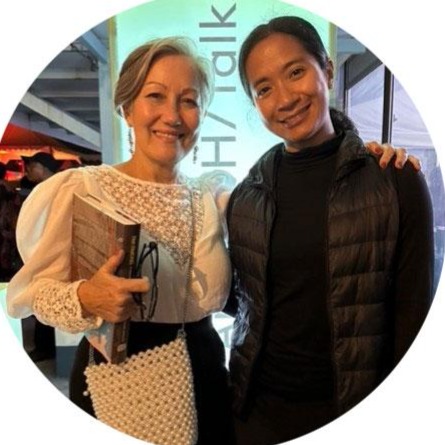
The sense I got from the conversation we had after her performance in Manila was that Eisa would welcome experiencing an all-women’s environment like the Womanifesto events in order to be able to recharge and gain strength from like-minded women artists.

I connected Eisa to Citra on a trip she made to Ubud recently. They spent a day together and Citra introduced Eisa to the senior Balinese women artists that have influenced Citra’s work. Although she did not go into further detail, Eisa suggested that she and Citra would be looking at ways to collaborate in the future.
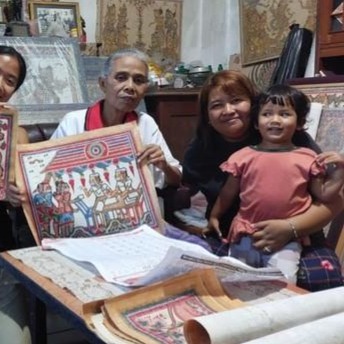

I like to think this introduction and outcome was what Womanifesto hoped for when they started their own connections nearly thirty years ago.
Reflection 6
I was at the beginning of my academic journey at Lasalle in Singapore without a thesis topic confirmed when attended a symposium for the Gender in Southeast Asian Art Histories project at the Power Institute at the University of Sydney called Art Digitality and Canon-making in October 2019. During the same trip, I also attended the opening of the Womanifesto exhibition called ‘Archiving Womanifesto: An International Art Exchange 1990's-Present' at the Cross Art Projects in Sydney. The combined experience of listening to academics speak at the Power Institute, being able to see the Womanifesto archive first-hand and meeting some of the Womanifesto members, set me on the path to my thesis topic. It was following these two events and encouragement from my thesis supervisor, Clare Veal, that the topic of my thesis slowly emerged.

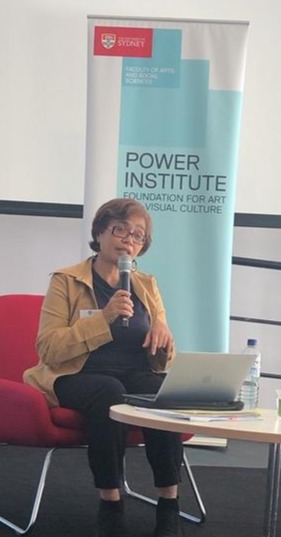
Once my thesis was completed, opportunities to share some of my knowledge with artists I was meeting at exhibitions and biennales, such as Eisa and Citra, kept the connection fresh. The mid-career artists I was meeting and sharing the journeys of the women’s art collectives were interested to know more about strategies to help themselves navigate a masculinised contemporary art world in their own countries. I found that they were all looking for community. The kind of community that Womanifesto had created for themselves...
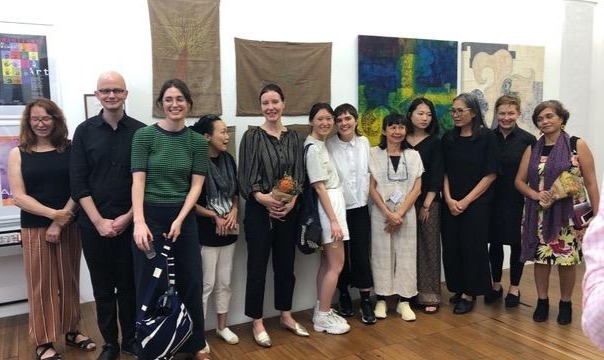
It was satisfying to make the connections and to see how they developed further.
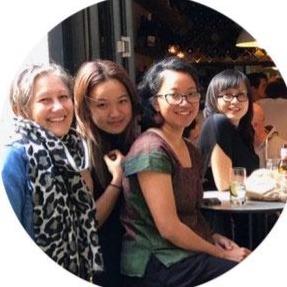

Reflection 7
It is possible that had I encountered the archive before completing my thesis I might have expanded on areas outside the history, motivations, process and format of Womanifesto and its organisation. The time I spent with the Womanifesto archives provided two new areas of reflection for myself pertaining to my thesis and current interests.

The archive’s photographs and video clips signalled the importance of get-togethers, workshops and collaborations as the real value of the biennial events. This visual treasure trove brought to life what Phaptawan referred to as ‘a mental space for women artists’4 and provides more evidence of what that mental space looked like, how it benefitted the participants.

In addition, Womanifesto’s link with other groups and individuals would have been useful to research in terms of an on-going need to provide space, collaborations and opportunities for women artists in the region as related to me in discussions with emerging and mid-career artists in the region. The strong attendance of artists from women’s art collectives at the webinar I moderated with Citra demonstrated the on-going interest and need for gatherings provided by Womanifesto and Filipino collective, Kasibulan.
Finally, the ability to match key moments that Varsha shared in her interview with photos, videos and documentation of Womanifesto activities helped me notice an evolution from my original role as a student of women’s art collectives, to engaged audience member, to collector of women’s artwork, to advocate for women artists in Southeast Asia. Being able to contribute to this digital publication and its resources embodies the open atmosphere the Womanifesto co-founders wanted to manifest when they came together in the late 1990's—what effectively became the Womanifesto way. As I continue on my own journey I look forward to seeing what form their future events take.
1 Citra Sasmita, ‘Timur Merah Project: A Pilgrimage of Narrative, Memory, and Historical Legacy’, The Jugaad Project, 3 September 2022, www.thejugaadproject.pub/timur-merah (viewed 15 October 2025).
2 Email from Citra Sasmita to the author, 15 January 2022.
3 Text from Eisa Jocson to the author, 27 July 2023.
4 Phaptawan Suwannakudt, 'Catching the Moment, One Step at a Time,' in Fuyubi Nakamura, Morgan Perkins, and Olivier Krischer (eds), Asia Through Art and Anthropology, London, Bloomsbury Academic, 2013, p. 95.
Related pages
Share a Reflection
log in to share a reflection.
